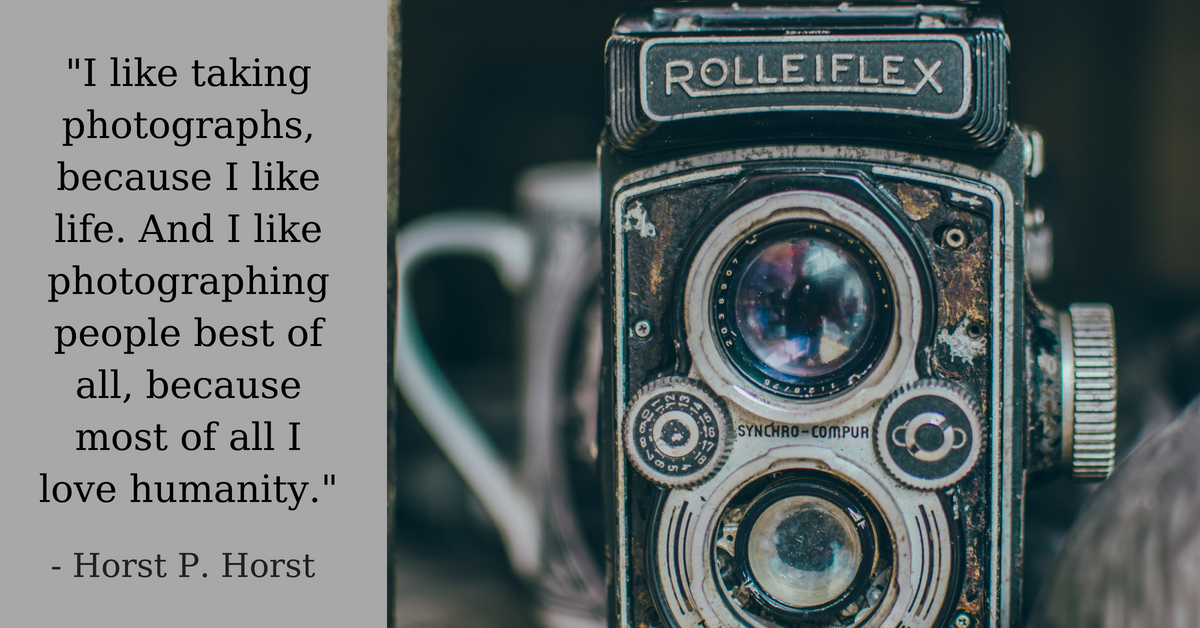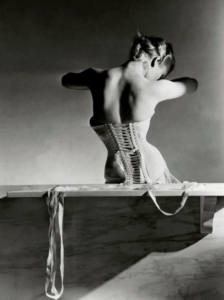
My father was a first generation American, born to Russian immigrants, and, although he became a bigtime lawyer (he was President of his Bar Association and they closed all the courthouses in Nassau County, Long Island, for half a day in his honor when he died), he and my mother were more intent on making a success of his practice than on paying attention to the arts. I learned about being chic from a couple of years I spent working for Horst P. Horst, a Vogue photographer, booking the models and scouring New York antique stores for Faberge boxes and the like to put in his ravishing pictures. He’s one of the photographers featured in a show that’s at Los Angeles’s Getty Museum now, that’s written up on the front page of yesterday’s Arts and Leisure section of The New York Times, with this picture of Horst’s included in the article. They say that “the bastard stepchild of the fine art world is finally getting its birthright,” in Icons of Style: A Century of Fashion Photography, 1911-2011.

This particular picture has a special story about it, where Madonna recreated this Mainbocher Corset of 1939 in her video for Vogue, an iconic song from her, I’m Breathless album. For more about the wonder that Horst was, click here.
“Iconic is one of those words much overused in fashion. Like luxury, or genius. But they’re all applicable – honestly – to the work of Horst P Horst.
“Sculptural is an appellation applied to his photography, his use of light and shade to transform fabric and the human form alike into monoliths reminiscent of classical sculpture.”
“In the 1960s and ’70s, photographer Horst and writer Valentine Lawford were the world’s preeminent aesthetic power couple, celebrating the chic lives of society’s most glorious swans and turning lifestyle journalism into a modern art form.” Click here for more.
Horst P. Horst’s “The Mainbocher Corset,” from 1939
Credit: Horst P. Horst/Klein Gallery, Los Angeles

SPECTACULAR! This reminds me of how many “obscure geniuses” there are out in the world. A few “make it’ in every genre of life and then it’s repeated over and over again for commercial reasons. Business seems to define “great” art. I have seen so much great art everywhere… on the walls of LA, at inner-city schools, in mental health centers, in the clothes and hairstyles of the young, in the baked goods at Ralph’s supermarket, and on and on it goes. It would be such a fun and profound exercise to buddy up with another person in your life, like your neighbor, to explore and discover their genius. Everyone is an original piece of art and a genius of being themselves. A recognized and enhanced sense of self coming from another would go a long way toward healing the feelings of alienation and lack of self-value held by so many. By this “seeing and acknowledging your neighbor,” our institutions and way of life would be coming from empowerment, creativity, joy and beauty, instead of lack, anxiety and depression.
I keep thinking of ways to make this a friendlier city and a friendlier world. I think that’s right on to deal with upleveling consciousness to where caring about each other is as important as caring about ourselves. There’s no more vital pursuit for all sorts of reasons. Collectively, it would be a more workable world if greed weren’t people’s primary motivation, and individually the alienation that’s rampant would be addressed. Be on it with me for what we can do. How would we make neighborliness popular?
The photography artists in that show at the Getty had their day — they were not unrecognized and look, here they are at the Getty now. But, for unrecognized artists, that’s a challenge. My great friend, Angie Henigman, whose work is in my house, is one of the great undiscovered ones: http://www.henigmanart.com/